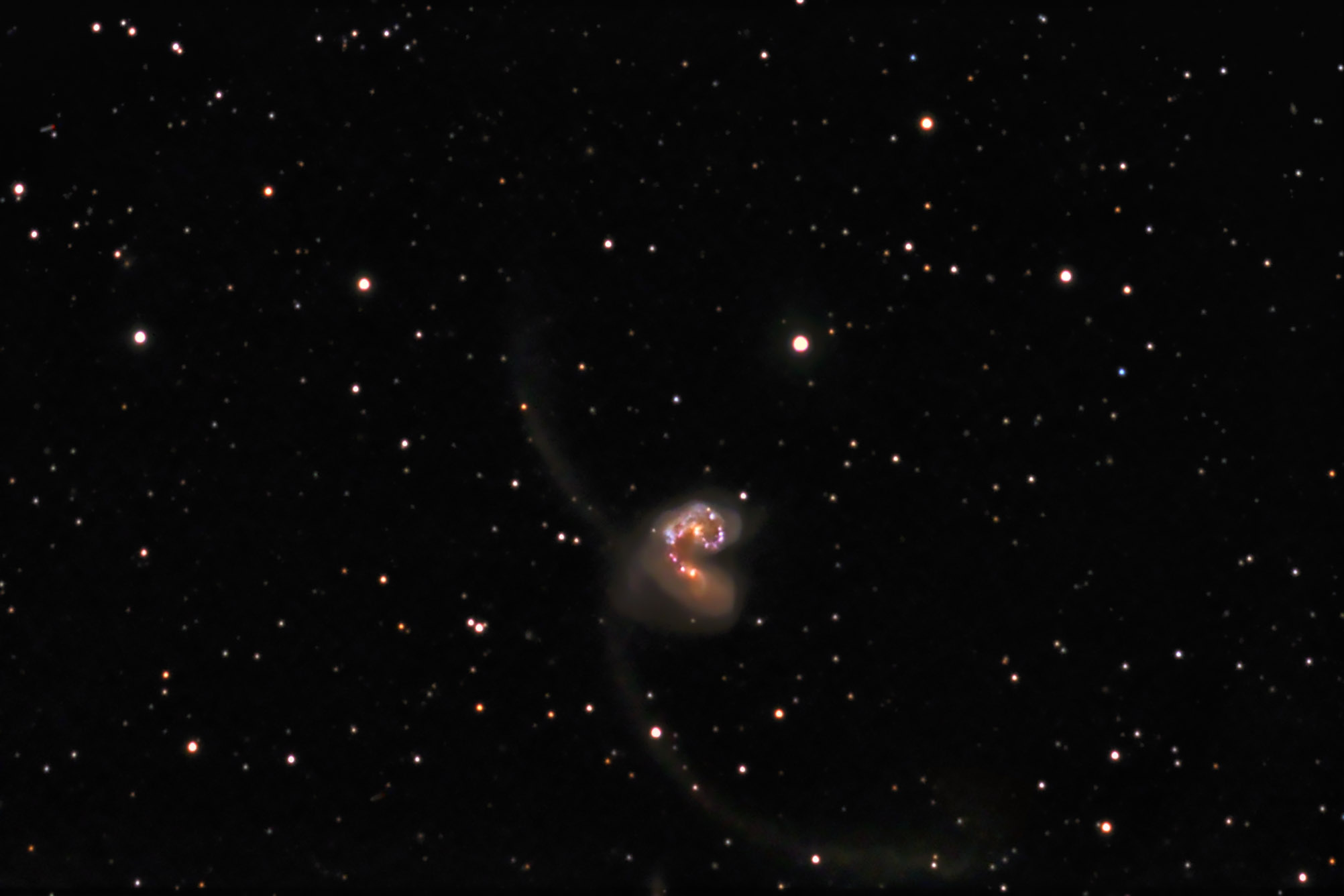| Description | Images |
Object name: NGC4038Designation(s): NGC4038, NGC40389, ARP244, Arp 244/NGC4038-9 are almost too low for my scope to see. Certainly too low to see clearly being below my normal 15 degree south limit. But they are so interesting I had to try anyway. These are known as the Antenna, clamshell or Ring Tail Galaxies. NGC 4038 and 4039 are a much pictured pair of colliding galaxies. Massive star birth has been triggered by the collision and huge tidal arms (the antennae) pulled out of them. When galaxies collide the dust and gas do collide but the stars do not. They are just far too small and too far apart for that to happen. But the gravity field is so strong that it can tear stars out of the galaxies and throw them across the universe as seen in the two tails of these galaxies. If your monitor can see into the darkness well enough you can see the lower (longer tail) actually starts to curve back on itself. These two are thought to be about 65 million light years away in the constellation of Corvus. The Hubble telescope took this photo of the upper galaxy in my shot (NGC 4039). http://imgsrc.hubblesite.org/hu/db/1997/34/images/d/formats/full_jpg.jpg and http://cseligman.com/text/atlas/ngc4038noao.jpg Related Designation(s):1RXS J120151.5-185214, 2MASS J12015301-1852034, 2MASX J12015317-1852379, Antennae Galaxy, Antennae Galaxy NED01, ARP 244, ARP 244 NED01, ARP 244:[BCE2005] 102, ARP 244:[NU2000] 4cm 07-04, ARP 244:[NU2000] 6cm 07-08, ARP 244:[ZBF2015] 097, ARP 244:[ZFB2014] A2-097, ARP244, CGS 389, Cul 1159-186, ESO 115919-1835.2, ESO 572-IG 047, ESO-LV 5720470, ESO-LV 5720481, FAUST 2987, HDCE 0684 NED008, HIPASS J1201-18, IRAS 11593-1835, IRAS F11593-1836, LDCE 0856 NED011, LGG 263:[G93] 008, MCG -03-31-014, MRC 1159-185, NGC 4038, NGC4038, NGC40389, NVSS J120152-185205, PGC 037967, PKS B1159-185, PKS J1201-1852, PMN J1201-1852, Ring Tail, Ring Tail NED01, RR 206, RR 206a, RR 207a, SGC 115919-1835.2, UGCA 264, USGC S176 NED02, VLSS J1201.9-1852, VV 245, VV 245b, [CHP2004] J120153.0-185210, [DBA2001] FA 33, [GKJ2001] B, |

